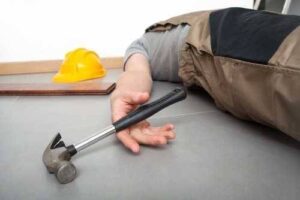 Construction is a relatively dangerous industry, full of potential (and preventable) safety hazards. According to The Occupational Safety and Health Administration, the rate of fatal injury of those working in construction is higher than the national average rate for all industries.
Construction is a relatively dangerous industry, full of potential (and preventable) safety hazards. According to The Occupational Safety and Health Administration, the rate of fatal injury of those working in construction is higher than the national average rate for all industries.
Hazards may include falls, trench collapse, and scaffold collapse, electric shock and arc flash or arc blast, failure to use proper personal protective equipment, and repetitive motion injuries. Though the field is rife with hazards, there are ways conscientious workers and managers can prevent them and thereby protect workers. Here are some of the most common construction-site hazards and some of the ways they can be prevented.
Improper use of scaffolding
According to OSHA, about 2.3 million U.S. workers use scaffolds often. When scaffolding is not put up or used properly, workers may fall.
Workers and managers can avoid creating a hazard by erecting scaffolding on solid “footing” so that it doesn’t move once set up and making sure the scaffolding is rigid and strong enough to support its own weight plus four times the maximum intended load without settling or being displaced. They can ensure appropriate supervision of those putting up a scaffold by a sufficiently experienced and competent person.
Falls
In construction, more workers die from falls than in any other way. Unstable working surfaces, misuse or failure to use protective equipment and human error can be factors in falls.
High-quality guardrail systems can do wonders in protecting against falls: good managers should make sure that workers near the edges of floors and roofs have guardrails to rely on. As a precaution, holes in floors should be covered and workers should use body harnesses and safety net systems.
Ladders
According to OSHA, 24,882 construction injuries and up to 36 construction fatalities per year may result from falls on stairways and ladders. There are many ways to prevent ladders from becoming safety hazards.
Workers and managers can start by choosing the correct ladder for the job and having a competent, knowledgeable person inspect the ladder for defects that may present a hazard. If a ladder is defective, managers should properly label and store it so it’s not used until it can be repaired. Ladders with metallic components can be prevented from becoming electrical hazards if kept away from power lines and electrical work.
For every construction-site hazard that causes injury, there are numerous ways it could have been prevented. If you or a loved one has been injured in an accident, always seek medical attention first. If you believe the accident could have been prevented, the experienced personal injury attorneys at Alpert Schreyer, LLC can help. We will listen to you, review your case, and get you the compensation you deserve.
